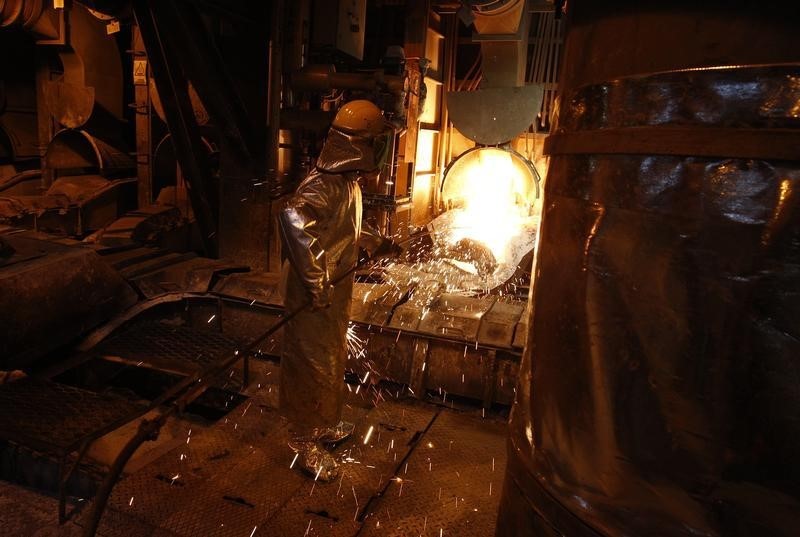Investing.com - Copper prices tumbled to the lowest level since April 2009 on Monday, as steep declines on Chinese stock markets dampened appetite for the red metal.
Copper for March delivery on the Comex division of the New York Mercantile Exchange plunged 4.6 cents, or 2.28%, to trade at $1.970 a pound as of 08:00 GMT, or 3:00AM ET. It earlier fell to $1.966, a level not seen in more than six years. Meanwhile, three-month copper on the London Metal Exchange slumped 2.26% to $4391.25 a metric ton, the lowest since May 2009.
The Shanghai Composite Index closed down 5.3%, the smaller Shenzhen Composite Index sank 6.6% and the CSI300 Index lost 5%, despite efforts by Beijing to stabilize the market. Last week, the Shanghai Composite lost all of its 2015 gains, falling by 10% in just five days.
Market players are concerned that the plunge in the stock market could spread to other parts of the Chinese economy, triggering fears that the Asian nation's demand for the industrial metal will decline.
The Asian nation is the world’s largest copper consumer, accounting for nearly 45% of world consumption.
Last week, copper prices plunged 5.4 cents, or 5.13%, as a meltdown on China’s stock market and a rapid depreciation of the yuan rattled investor sentiment.
While investors had expected the central bank to allow the yuan to fall further after last year’s 4.5% depreciation, the rapid pace of the devaluation has fueled fears that the world’s number two economy is growing even more slowly than expected.
On Monday the People's Bank of China guided the yuan higher for a second straight session by setting the mid-point fix at 6.5626 against the dollar. On Friday, the midpoint was fixed at 6.5636.
Elsewhere in metals trading, gold futures held near the prior session’s nine-week high as market players sought refuge amid steep declines in global stock markets.
The yellow metal gained $34.40, or 3.54%, last week, as safe-haven demand was boosted amid a global stock market rout, worries over the Chinese economy and heightened geopolitical tensions.
